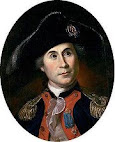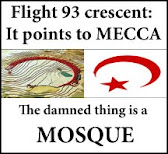This is Part 2 of Statistical islam by Bill Warner who runs the site Political Islam. I cannot reinforce strongly enough what an excellent job Mr. Warner does and how much there is to learn on Political Islam.
Statistical Islam, Part 2 of 9
By Bill Warner
Case 1: The Koran of Mohammed
Mohammed can be clearly understood, but the Koran must be the most famous book that has been read so little and understood even less. Contrast this with Mohammed's day. In the Sira (the biography of Mohammed), we find accounts of illiterate Muslims debating the meaning of the Koran. The Muslims of Mohammed's day understood the Koran for a simple reason. The Koran of 632 AD (Mohammed's death) is not the one of today. Every verse had the immediate context of Mohammed's life. A new verse had the context of what he needed at that time. To all those near Mohammed, each new verse made sense; it had a context and therefore meaning. The voice of Allah resolved Mohammed's problems. It is Mohammed's life that gives the Koran its context and meaning.
The Koran of the bookstore is not the historical Koran of Mohammed, because Uthman, a caliph (supreme ruler) had it arranged starting with the longest chapter and ending at the shortest chapter. After he created the Koran we know today, he burned the originals. The time and story have been annihilated by the rearrangement. From a statistical point of view, the text was randomized and, hence, very difficult to understand.
It is an easy task to reconstruct the Koran of Mohammed's day, the historical Koran. Take the Koran and rearrange the pages of the chapters in the proper chronological order in a line on a table, since the time order of the chapters is well known. Then take the pages of the Sira (Mohammed's biography) and lay them out in a line beneath the Koran. It will be seen that the Sira and the Koran fit together like a key in a lock. The Koran is the warp and the Sira is the woof that forms a single fabric, the historical Koran. If these two are integrated into one text, the historical Koran is reconstructed.
When this reconstruction is done, the Koran becomes the epic story of the rise and triumph of Islam over all of the native Arab culture. The historical Koran is straightforward and not confusing at all. Just as in Mohammed's day, anyone can understand it.
The historical Koran reveals the primary division of the text. The early Koran written in Mecca is very different from the later Koran written in Medina. The early Koran is more religious and poetic. The later Koran is more historical and political. There is a radical change in its tone, subject and language in the two texts. The difference is even clear to a first-time reader. There is a Meccan Koran and a Medinan Koran. The relative sizes of the two Korans are: Meccan Koran is about 64% of the total Koran; the Medinan Koran is 36% of the total .
For the statistics go to: http://cspipublishing.com/statistical/index.html
Bill Warner, Director, Center for the Study of Political Islam
Original article is here.
Subscribe to:
Post Comments (Atom)






























0 Comments - Share Yours!:
Post a Comment